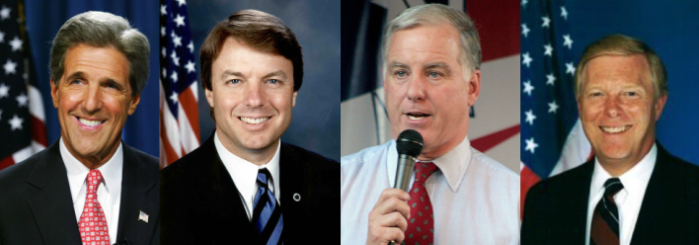Dan Guild on why topline numbers for each candidate are not the most important finding from the latest survey of Iowa caucus-goers. -promoted by Laura Belin
CBS/YouGov ended the Iowa polling drought (the longest drought since 1984) on January 5 with a new poll.
The big news is not the trial heat numbers (23 percent each for Joe Biden, Bernie Sanders, and Pete Buttigieg, 16 percent for Elizabeth Warren, 7 percent for Amy Klobuchar). The big news is that only 31 percent of respondents have definitely made up their minds.
The main lesson from 2004: anything can happen. By the way, that’s also the lesson from the Republican race in 2012, when Rick Santorum came out of nowhere in the last 30 days to win. About as many Iowa Republicans had made up their minds in 2012 as had in the 2004 Democratic caucus at this point.
This was the polling at this point in 2004 and the final result.

Certainly, Klobuchar supporters can look at this graph and draw comfort from the Edwards trajectory in 2004.
I have said previously that in many ways Buttigieg reminds me of Howard Dean. I fully admit this is based on nothing more than my skepticism that someone as young and inexperienced will hold up through the last 30 days. Prior polling has indicated that his support is the least firm, and I suspect over the next 30 days he will see significant attacks from the other candidates.
Similarly, I think we will see exchanges between Biden and Sanders, which may open the door for Warren, Buttigieg, or Klobuchar.
So the big takeaway from the latest poll isn’t so much who is leading, it is how undecided Iowans are at this point.
A related point: the effect of Iowa on the rest of the country is frequently about beating expectations. The data strongly indicates that those expectations are set about 30 days before the caucuses. So in many ways, the latest polls are the baseline the press will use to evaluate how well candidates did.
I will get into the trial heat numbers in the next few days, but because so few have firmly made up their minds, I want to look not at who is ahead but who voters are considering. In some ways this is more relevant. This chart is of the percentage for each candidate that voters are considering. Since June 3, candidates have been closely bunched: Warren, Sanders and Biden. There is fact little difference between them now. But there are two other trends I want to highlight:
Historically, as I have written before, it is unlikely that Biden will improve on his current percentage in Iowa. Since he is at best in the low 20s, the door is very much open in Iowa and most have not made up their minds.
But the current split means Biden can win. So can Sanders, Warren, Buttigieg, or Klobuchar.
Top image, from left: John Kerry, John Edwards, Howard Dean, and Dick Gephardt, as pictured during the 2004 campaign.



